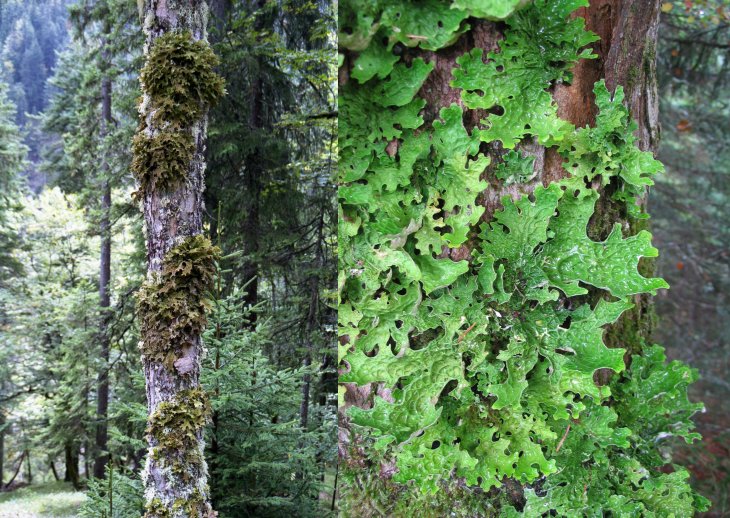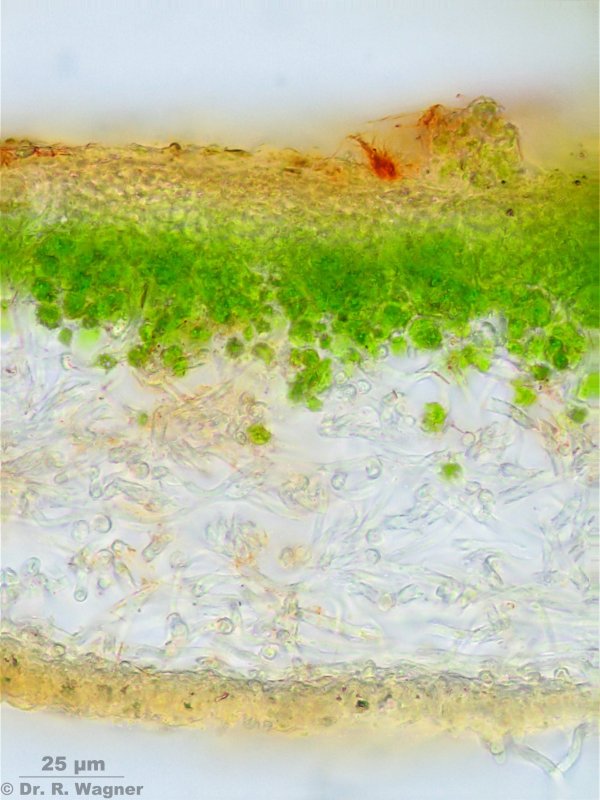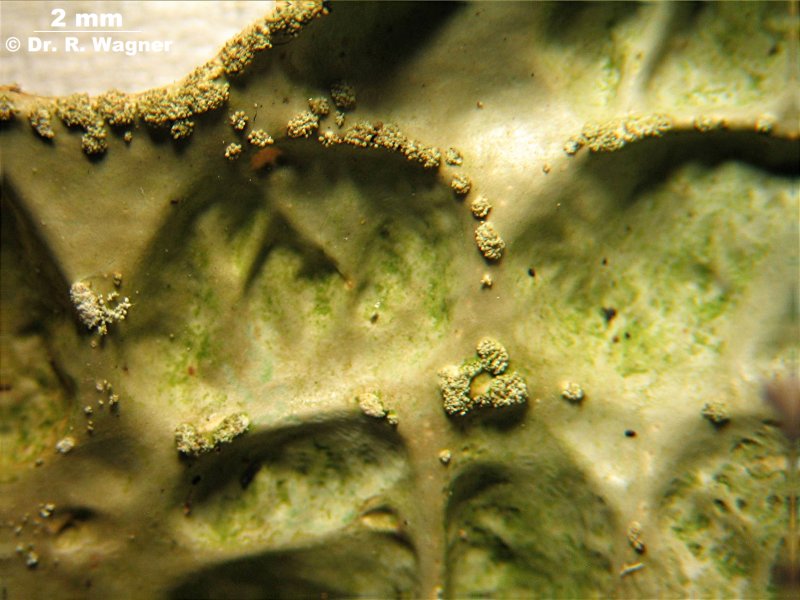the foliose lichen Lobaria pulmonaria forms dens bunchs on dead trunks, preferably on sycamoe maple (Acer pseudoplatanus).

The thallus of a foliose lichen is, as the name suggests, similar constructed to the leaf of a tree. There is a clear differentiation between top and bottom of the leaf. Under a thin cortex of fungal tissue the symbiontic algae concentrate at the top side. A pith consisting of mycelium follows beneath. This pith is terminated at the bottom by a cortex of dense mycelium.

Non-sexual reproduction happens via soralias. These are break-ups at the top side. Here little balls, the soredias, are formed. A soredium consits of algae, wrapped in threads of fungus. It can be recognized as a very small lichen. The reproduction happens by spreading of the soredias to new locations.

Don't forget to have a look at part 2!

